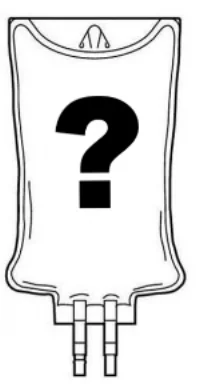Velocity Time Integral (VTI) and the Passive Leg Raise: Taking Volume Assessment to the Next Level
/Hypotensive patients requiring volume resuscitation are a regular occurrence for emergency physicians. Clinicians are often faced with determining whether patients will respond to favorably to IV fluids both before and concomitant with vasopressor administration. Mounting evidence suggests that excessive IV fluid administration is detrimental (see our recent post by Dr. Dave Mackenzie).
Many clinicians with basic knowledge of point of care ultrasound (POCUS) are comfortable making decisions regarding volume status by examining the lung for the presence of sonographic B-lines and the collapsibility of the inferior vena cava (IVC). The accuracy of IVC collapsibility in estimating central venous pressure (CVP) and therefore predicting fluid responsiveness, particularly in spontaneously breathing patients, has mixed evidence (1,2). The limitations of IVC collapsibility to predict volume status and responsiveness may be due to its function as a surrogate for CVP, which is of limited value when measured in isolation (3). This mixed evidence of using IVC collapsibility in determining volume status has, appropriately, lead many clinicians to use POCUS of the IVC to predict fluid tolerance.
Enter the velocity time integral (VTI), a measurement that can be coupled with a passive leg raise to assess hypotensive patients for changes in cardiac output following a transient volume challenge. In contrast to IVC and lung imaging, the VTI allows clinicians to asses for true fluid responsiveness.
What is the velocity time integral?
The VTI is a measurement of blood flow during systole that is passing through the left ventricular outflow tract (LVOT). Knowing the VTI, along with the cross-sectional area of the LVOT, allows sonographers to calculate stroke volume and therefore cardiac output. The normal range for a VTI is 18-22 cm, values below this are suggestive of depressed cardiac output. For the purposes of volume assessment, the key concept is that LVOT size is fixed, therefore an increase in the VTI is indicative of an increase in cardiac output. If a significant change in VTI is observed after a fluid challenge, this would indicate that the patient is preload (fluid) responsive.
The VTI, in conjunction with the passive leg raise maneuver, has been shown in multiple studies to be an accurate predictor of volume responsiveness in spontaneously breathing, hypotensive patients. An increase in the value of 12% has a sensitivity ranging from 69-77% and specificity ranging from 89-100% for a favorable hemodynamic response to crystalloid bolus (4,5,6).
How to do a volume assessment with VTI in conjunction with passive leg raise
1) Obtain an apical five chamber view to visualize the LVOT with the patient in the semi-recumbent position (head of bed at 45 degrees).
2) Place the Doppler gate in the LVOT as illustrated in the example below (Figure 1) and record the waveform.
Figure 1. The upper portion of the image shows an apical 5 chamber view of the heart with the Doppler gate placed in the LVOT. The downward deflecting waveform represents the flow through the LVOT during systole. The VTI is outlined and the value displayed in the upper left-hand corner.
3) Some ultrasound machines have a tool to calculate the VTI area while others require manual tracing of the Doppler tracing as illustrated above. The VTI will then be displayed.
4) Have an assistant perform the passive leg raise maneuver (PLR) (Figure 2). This allows the ultrasound operator to focus on obtaining a repeat apical view and again measure the VTI (which should be done within 1-2 minutes of the PLR).
Figure 2. The passive leg raise maneuver. The VTI should be measured in both the semi-recumbent position and within 2 minutes of placing the patient supine with the legs raised.
5) Compare the VTI measurements from before and after the PLR.
- A change > 12% is significant and indicates fluid responsiveness (some sources use ≥ 10%).
Pearls and Pitfalls:
- The line of the doppler gate needs to be within 20 degrees of the direction of the outflow tract. This is best achieved by obtaining a well oriented apical view (probe over the apex, septum is vertically oriented, and the atrioventricular valve plane is horizontal). Use the angle correct function if your view is suboptimal and this function is available.
- The doppler gate needs to be in the same spot in the LVOT for both VTI measurements.
- Practice being consistent with orientation and Doppler gate location! Inconsistency may limit the inter-operator reliability of the test.
A case from our EMERGENCY DEPARTMENT:
An elderly gentleman with a history of CHF presented to the ED with fever and dyspnea. He received a liter of crystalloid pre-hospital by EMS, and upon arrival was persistently tachycardic with a blood pressure of 90/50. Labs showed a leukocytosis, lactate was slightly elevated at 2.7, and CXR revealed a new infiltrate. He was diagnosed with sepsis from a pulmonary source.
His ED physicians questioned when to continue fluid resuscitation given his CHF history. Lungs were noted to be without diffuse sonographic B-lines to suggest pulmonary edema.
The following VTI image (Figure 3) was obtained with the patient in the semi-recumbent position (note the low VTI consistent with known CHF):
Figure 3. Baseline VTI (13.6 cm) obtained in an elderly septic patient with history of CHF.
The VTI was then measured again (Figure 4) after placing the patient in the supine position with PLR:
Figure 4. Repeat measurement of VTI (16.0 cm) immediately following passive leg raise maneuver. A 15% increase in VTI from baseline (13.6 cm -> 16.0 cm) indicating a favorable response to volume challenge. Note the doppler gate is slightly closer to the septum in the pre-PLR images, room for improvement!
Note the change in VTI of 15%. The patient responded favorably to his fluid challenge. His clinicians were empowered to continue judicious crystalloid resuscitation to correct his vital sign abnormalities without fear of pending volume overload.
Take home:
Start taking the time to practice measuring the VTI! The value can be useful in itself for indicating depressed cardiac function. When combined with the PLR, it’s non-invasive and yields important data for resuscitating that tenuous hypotensive patient.
References
1) Muller L, Bobbia X, Toumi M, et al. Respiratory variations of inferior vena cava diameter to predict fluid responsiveness in spontaneously breathing patients with acute circulatory failure: need for a cautious use. Crit Care 2012;16:R188 [Pubmed]
2) Lanspa MJ, Grissom CK, Hirschberg EL, et al. Applying dynamic parameters to predict hemodynamic response to volume expansion in spontaneously breathing patients with septic shock. Shock 2013; 39(2):155-160. [Pdf]
3) Marik PE, Cavallazzi R. Does the central venous pressure predict fluid responsiveness? An updated meta-analysis and a plea for some common sense. Critical Care Med 2013;41(7):1774-1781.[Pubmed]
4) Lamia B, Ochagavia A, Monnet X, et al. Echocardiographic prediction of volume responsiveness in critically ill patients with spontaneously breathing activity. Intensive Care Med 2007;33:1125-32 [Pubmed]
5) Maizel J, Airapetian N, Lorne E, et al. Diagnosis of central hypovolemia by using passive leg raising. Intensive Care Med 2007;33:1133-8.[Pubmed]
6) Monnet X, Rienzo M, Osman D, et al. Passive leg raising predicts fluid responsiveness in the critically ill. Crit Care Med 2006;34(5):1402-1407.[Pubmed]

















